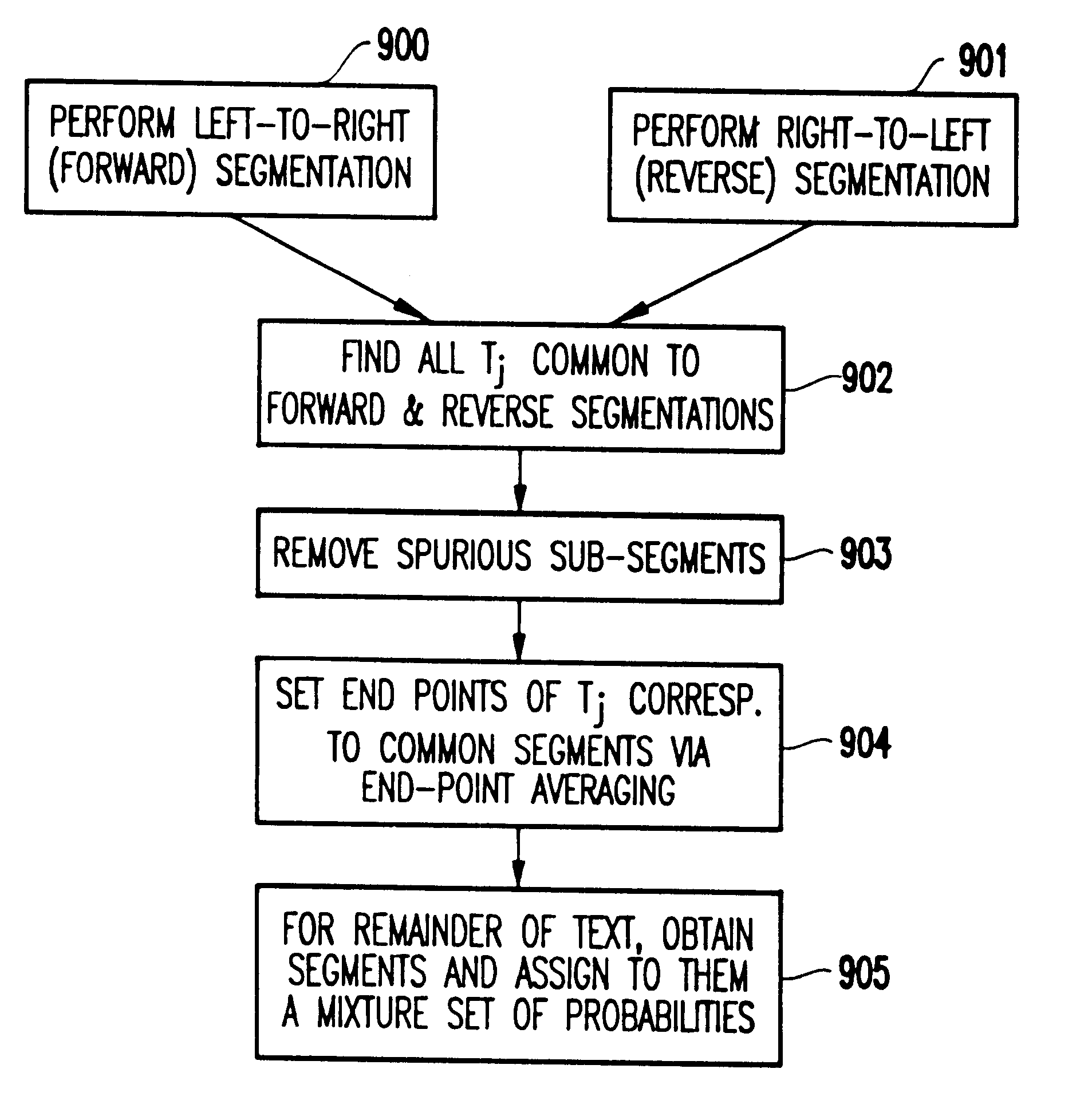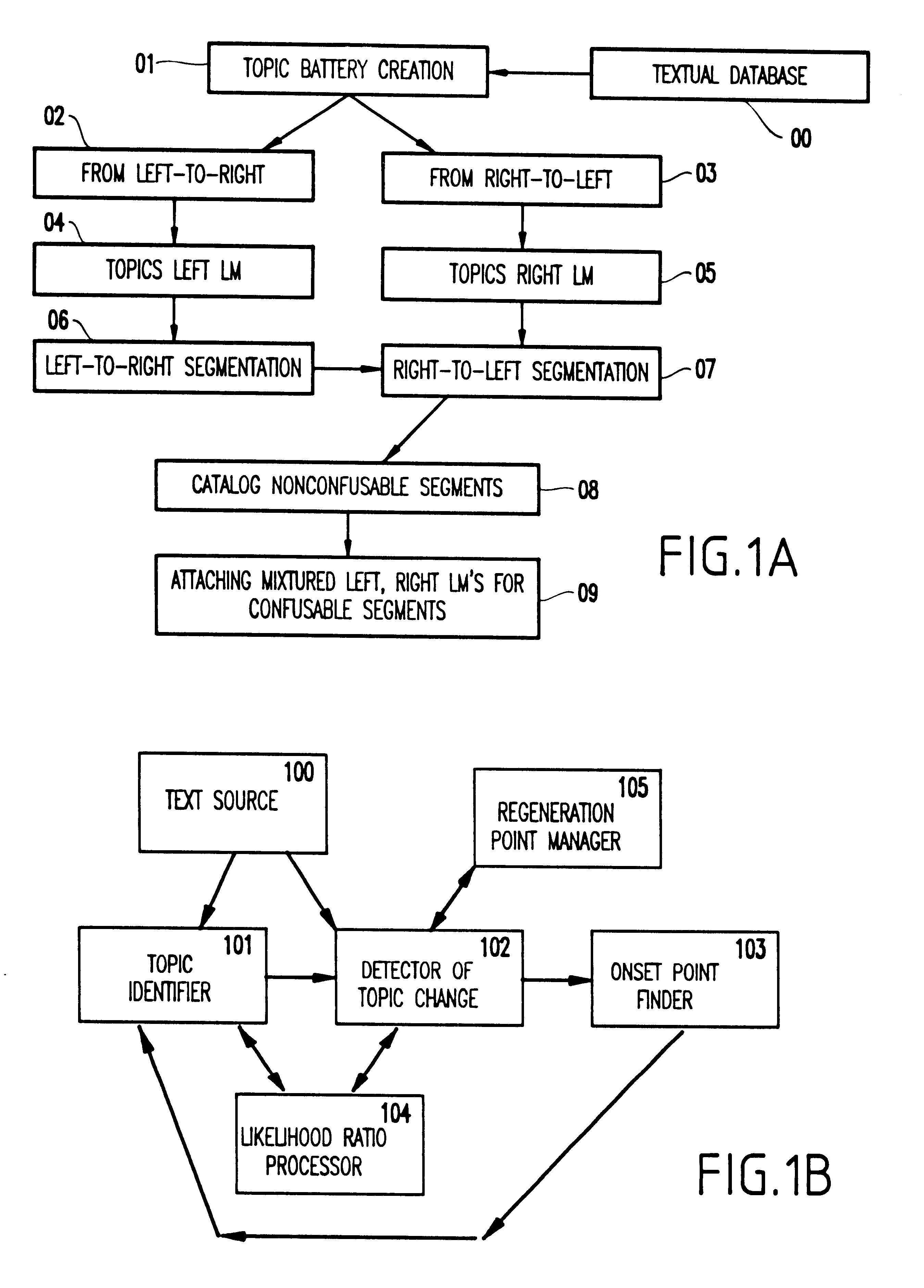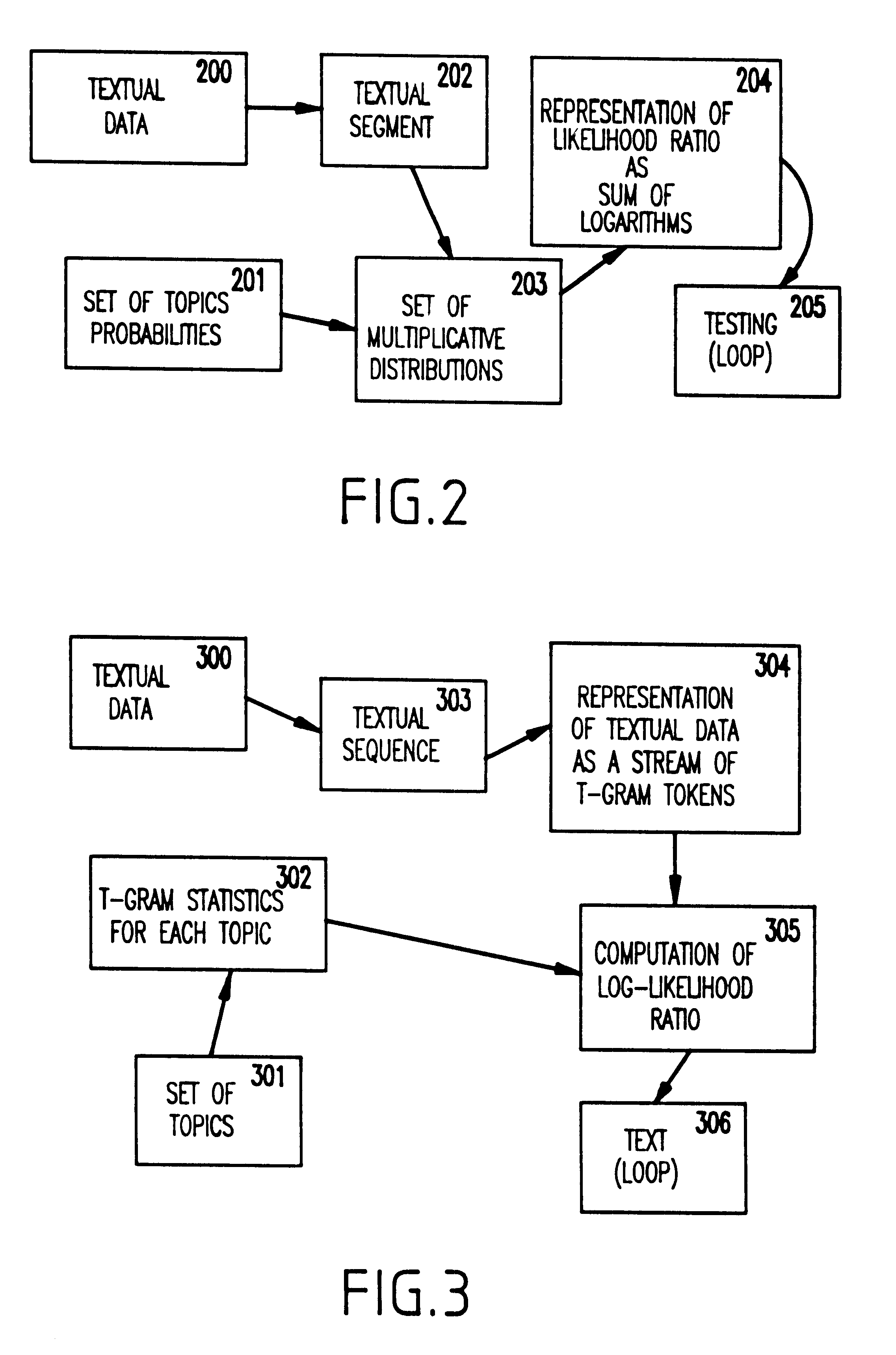Method and system for off-line detection of textual topical changes and topic identification via likelihood based methods for improved language modeling
a language modeling and likelihood-based method technology, applied in the field of offline topic detection, can solve the problems of lack of stability and robustness, inability to employ suitable methods, and inability to detect topical changes present in data
- Summary
- Abstract
- Description
- Claims
- Application Information
AI Technical Summary
Benefits of technology
Problems solved by technology
Method used
Image
Examples
Embodiment Construction
Referring now to FIGS. 1-12, preferred embodiments of the present invention will be described.
As mentioned above, basically the present invention applies change-point detection methods for detection of "homogenous" segments of textual data while moving in two different "time" directions. For example, such two directions may include from a beginning of a text to an end of the text, and vice versa. This enables identification of "hidden" regularities of textual components that are obtained for each "time" direction. If these regularities coincide for both directions, then they are used for topic labeling. Otherwise, they are used to build mathematical models that reflect confusability in these regularities.
Hereinbelow is described how labelling is performed for each of the directions. Then, it is described how resolution of confusable decisions that were obtained for the different "time" directions is performed.
Generally, a change-point strategy can be implemented using different stat...
PUM
 Login to View More
Login to View More Abstract
Description
Claims
Application Information
 Login to View More
Login to View More - R&D
- Intellectual Property
- Life Sciences
- Materials
- Tech Scout
- Unparalleled Data Quality
- Higher Quality Content
- 60% Fewer Hallucinations
Browse by: Latest US Patents, China's latest patents, Technical Efficacy Thesaurus, Application Domain, Technology Topic, Popular Technical Reports.
© 2025 PatSnap. All rights reserved.Legal|Privacy policy|Modern Slavery Act Transparency Statement|Sitemap|About US| Contact US: help@patsnap.com



